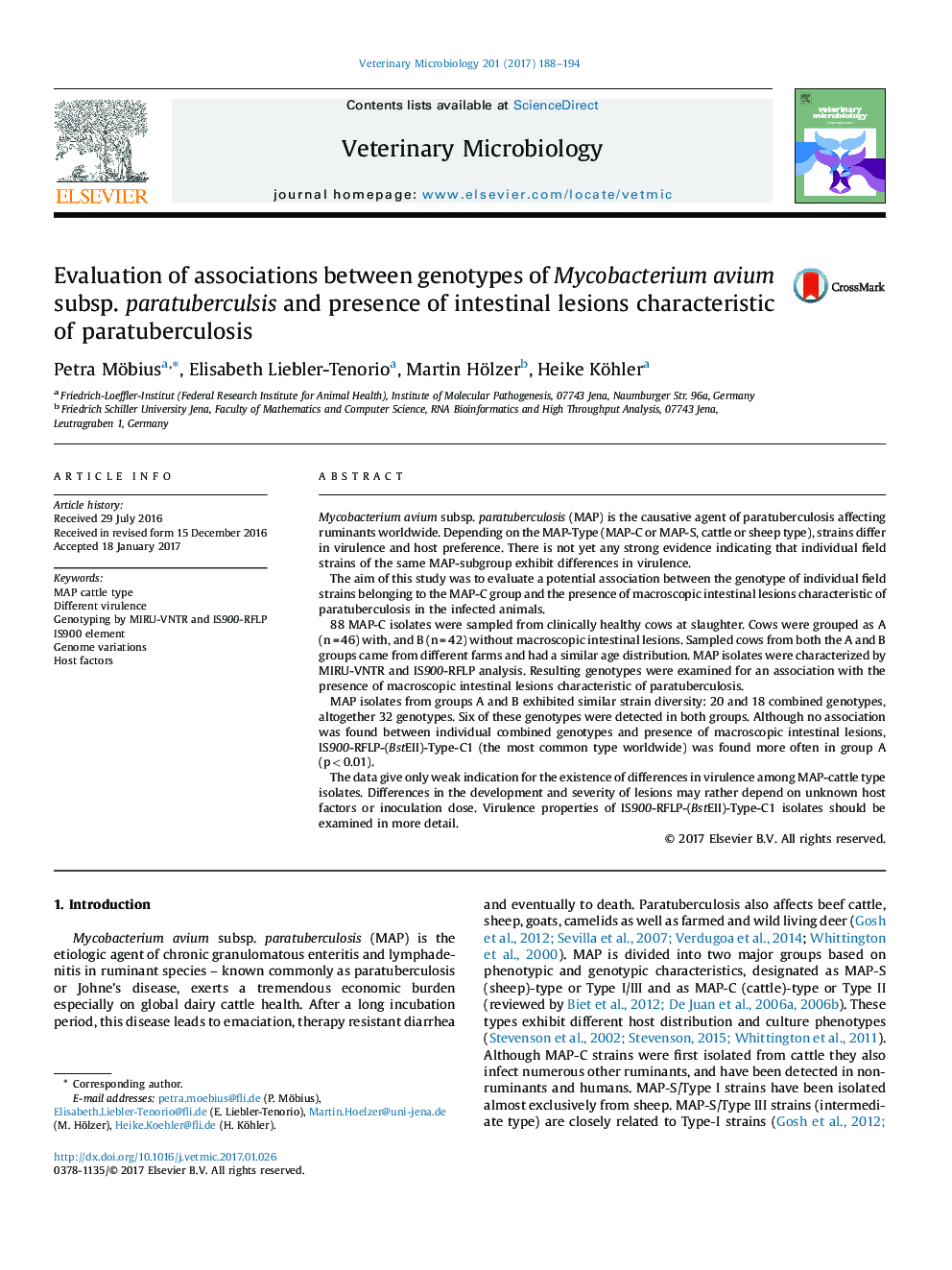| Article ID | Journal | Published Year | Pages | File Type |
|---|---|---|---|---|
| 5545131 | Veterinary Microbiology | 2017 | 7 Pages |
â¢Weak indications for different virulence among MAP field isolates of cattle type.â¢No association between combined genotypes and presence or absence of macroscopic intestinal lesions in slaughtered cattle.â¢More isolates from animals with lesions exhibited IS900-RFLP-(BstEII)-type C1.â¢IS900 might affect expression of adjacent genes involved in virulence; probably, there are unknown genomic variations or regulatory elements.â¢Differences in the development of lesions may also depend on unknown host factors or inoculation dose.
Mycobacterium avium subsp. paratuberculosis (MAP) is the causative agent of paratuberculosis affecting ruminants worldwide. Depending on the MAP-Type (MAP-C or MAP-S, cattle or sheep type), strains differ in virulence and host preference. There is not yet any strong evidence indicating that individual field strains of the same MAP-subgroup exhibit differences in virulence.The aim of this study was to evaluate a potential association between the genotype of individual field strains belonging to the MAP-C group and the presence of macroscopic intestinal lesions characteristic of paratuberculosis in the infected animals.88 MAP-C isolates were sampled from clinically healthy cows at slaughter. Cows were grouped as A (n = 46) with, and B (n = 42) without macroscopic intestinal lesions. Sampled cows from both the A and B groups came from different farms and had a similar age distribution. MAP isolates were characterized by MIRU-VNTR and IS900-RFLP analysis. Resulting genotypes were examined for an association with the presence of macroscopic intestinal lesions characteristic of paratuberculosis.MAP isolates from groups A and B exhibited similar strain diversity: 20 and 18 combined genotypes, altogether 32 genotypes. Six of these genotypes were detected in both groups. Although no association was found between individual combined genotypes and presence of macroscopic intestinal lesions, IS900-RFLP-(BstEII)-Type-C1 (the most common type worldwide) was found more often in group A (p < 0.01).The data give only weak indication for the existence of differences in virulence among MAP-cattle type isolates. Differences in the development and severity of lesions may rather depend on unknown host factors or inoculation dose. Virulence properties of IS900-RFLP-(BstEII)-Type-C1 isolates should be examined in more detail.
